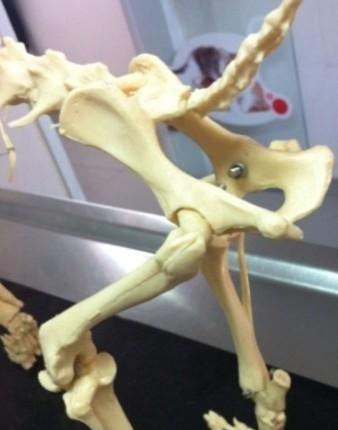Hip dysplasia is the abnormal development of the hip bone joint.
Skeletal anatomy of the hip joint

Skeletal anatomy of the hip joint
Skeletal anatomy of the hip joint
The red line shown in the figure demarcates the femoral head in the acetabulum, which accounts for only about 1/4 of the femoral head, which belongs to severe hip dysplasia.
I. What are the symptoms of hip dysplasia:
Hip dysplasia in young dogs often occurs in medium and large dogs, such as golden retrievers and Labrador retrievers in cities.
This X-ray film is a digital film. Through the green measurement line in the picture, it can be found that the area of the left femoral head and the right femoral head in the joint socket is obviously different, but because the dog was not sedated and anesthetized when this film was taken, so
III. Selection of treatment plan
There are two types of treatment plans for this kind of disease: conservative treatment and surgical treatment. In short, early surgery in young dogs can remove the cause and improve long-term treatment.
The hip joint of a 6-year-old pastoral dog is slightly misplaced, basically in the articular socket
The highlighted and smooth artificial femoral head in the picture, and the acetabulum is also a smooth artificial cup
3: Resection of the femoral head and femoral neck, refers to the removal of the friction between the femur and the acetabulum, so that a fibrotic pseudo-joint can be formed. Since the pseudo-joint is fibrous, its instability leads to the disappearance of postoperative clinical symptoms.
The dashed part in the picture is the canine femoral head and femoral neck, which can really reduce friction only if they are completely removed as shown in the picture.
The specific treatment plan is different for each affected dog, due to the consideration of the age of the animal, the severity of the disease, the physical capacity, the owner's wishes and the economic situation.
13-year-old dog returns to normal after 4 weeks of conservative treatment
13-year-old dog returns to normal after 4 weeks of conservative treatment
This article represents the author's personal views, if there are mistakes, please advise and discuss.
